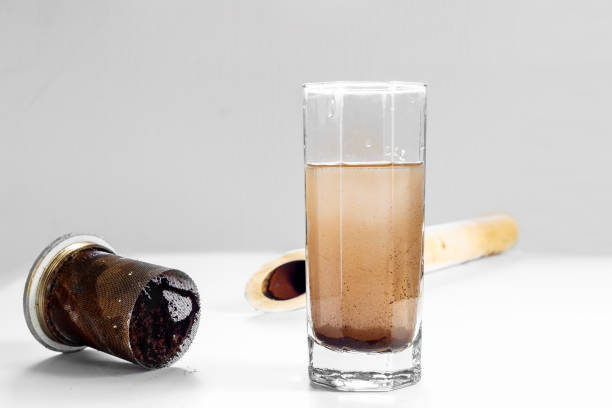TURBIDITY

Water high in Turbidity can contribute to buildup in our plumbing. Safe Home offers a few kits that provide drinking water testing for turbidity in city water or well water supplies.
Parameter Type: Drinking Water Testing for Volatiles
Parameter Name: Turbidity
What it is and Where it Comes From:
Turbidity is the cloudiness or haziness of a fluid caused by large numbers of individual particles that are generally invisible to the naked eye, similar to smoke in air. The measurement of turbidity is a key test of water quality. Material that causes water to be turbid include clay, silt, very tiny inorganic and organic matter, algae, dissolved colored organic compounds, and plankton and other microscopic organisms. Turbidity makes water cloudy or opaque. Turbidity in open water may be caused by growth of phytoplankton. Human activities that disturb land, such as construction, mining and agriculture, can lead to high sediment levels entering water bodies during rain storms due to storm water runoff. Areas prone to high bank erosion rates as well as urbanized areas also contribute large amounts of turbidity to nearby waters, through stormwater pollution from paved surfaces such as roads, bridges, parking lots and airports. Some industries such as quarrying, mining and coal recovery can generate very high levels of turbidity from colloidal rock particles. Drinking water testing gives you several benefits like peace of mind, identifying contaminants in your water, and insight into health concerns. Safe Home offers Laboratory drinking water testing kits for turbidity, allowing you to collect your water sample and ship it directly to our EPA-Certified Laboratory. This platform of drinking water testing for turbidity will give you an accurate level based on the lowest level of a parameter our instruments can detect (Method Detection Level). Safe Home drinking water testing for physical properties can be used for city and well water supplies. Drinking water testing should be done any time you notice a significant change in your water quality.
Health Effects:
In drinking water, the higher the turbidity level, the higher the risk that people may develop gastrointestinal diseases. This is especially problematic for immunocompromised people, because contaminants like viruses or bacteria can become attached to the suspended solids. The suspended solids interfere with water disinfection with chlorine because the particles act as shields for the virus and bacteria. Preforming drinking water testing routinely for contamination can ensure safe levels to protect yourself and your family.
Solutions to Contaminant Levels:
You have completed to drinking water testing process, what is the next step? A very effective method to remove turbidity is with reverse osmosis (“RO”) or ultrafiltration (“UF”) membrane systems. RO and UF systems can be used by homeowners, small communities, and commercial sites to reduce turbidity and produce crystal clear water less than 0.1 NTUs. In addition to RO and UF membrane systems, direct filtration can be used. Depending on the nature of the turbidity, a backwashing sediment filter using a special type of zeolite filter media does a great job at clarifying water. Sediment down to the 5-to-10-micron range can be removed, and then backwashed out periodically by the automatic control valve. Another low-cost option is to use a whole house cartridge filter. These filters are large size filter cartridge systems which come in various micron ratings and can filter down to the 1-micron size. One option frequently used by homeowners with cloudy water is to use a backwashing sediment filter, followed by a 1- or 5-micron filter cartridge system. There are many different designs and application criteria that must be considered, including the water chemistry, flow rates, how the water will be disinfected and what types of filtrations to use. In some cases, additional treatment such as reverse osmosis or other membrane filtration systems are used in conjunction with the polymer injection and settling. Who do I need to contact to find out more information about water quality in my area? Every community water supplier must provide an annual report to its customers, known as a Consumer Confidence Report (CCR). The report provides information on your local drinking water quality, including the water’s source, contaminants found in the water, and how consumers can get involved in protecting drinking water. How often does the local public water system preform drinking water testing? Frequency of drinking water testing depends on the number of people served, the type of water source, and types of contaminants. Certain contaminants are tested more frequently than others, as established by the Safe Drinking Water Act. You can find out about levels of regulated contaminants in your treated water for the previous calendar year in your annual Consumer Confidence Report (CCR).


